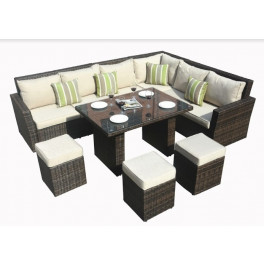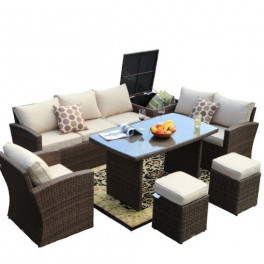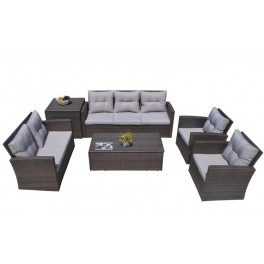Rain, sleet, snow, sun, wind, and hail don’t just impact our morning commutes and the clothes we choose to wear. They also prematurely age even the most beautiful, most expensive outdoor furniture. Part of the reason this happens is that many homeowners fail to find the best outdoor furniture materials for their particular climate.
Depending on the climate where you reside, you may need to look into a variety of fabrics and structural materials to ensure your outdoor furniture lasts as long as it should.
What is the best outdoor furniture material for you? Let’s break down your options.
Building Materials for Couches, Sofas, Chairs, and Tables
Take a look at your indoor chairs. Do they look like they get a lot of wear and tear? Truth be told, most of us are pretty hard on our couches, sofas, and chairs. That’s why the outside chair material you choose is so important. You need to combat human use plus abuse from the elements.
To determine the best outdoor chair material, you’ll have to weigh multiple factors, including durability and price.
These are the most common outdoor furniture materials for seating:
Plastic
Affordable, easy to arrange, and completely weather-resistant, plastic seems like the obvious choice when selecting outdoor furniture. However, plastic is naturally lightweight and tends to fall over (or even blow away) during windy conditions.
Stainless Steel
It’s heavy and expensive compared with plastic, but stainless steel is a solid option for outdoor chairs that remain in the same place. Keep in mind, even stainless steel can rust, so it’s important to maintain it and, if possible, bring indoors during the colder months.

Photo by Benzkrat on Shutterstock
Wood
Wood is one of the prettiest materials for outdoor furniture. Almost always, wood must be coated with weatherproof stain. If you’re looking for a more natural look, consider teak or cedar, both of which don’t necessarily require stain.
Synthetic Materials
Synthetic materials make up one of the best chair materials for outdoor furniture. Synthetic tables and chairs are manufactured to resemble wood or iron, available in a variety of colors, lightweight, durable, and are completely weather-resistant.
Iron/Metal
Most metals, including the ever-popular iron, are prone to rust. However, wrought iron is ideal for windy areas because it’s not likely to fly away.
When choosing the perfect outdoor furniture material for your dining table and chairs, consider who will be moving the chairs. While materials like iron or stainless steel are commonly used for outdoor dining, they aren’t particularly easy to move. If you have older adults or children who may struggle with the weight of the furniture, consider a lighter material such as aluminum or teak.
Cushions and Upholstery
Once you’ve selected the building material for your couch, sofa, or outdoor chair, you may want to select chair fabric upholstery.
Some fabrics are made specifically for outdoor environments, while others will work temporarily outdoors, but must be brought inside during the winter during bouts of extreme weather. Here are some popular outside material options:
Acrylic
Acrylic used in outdoor environments is usually pre-dyed before it’s woven into a sheet of fabric. In doing so, the dye seeps through the entire piece of acrylic and is less likely to fade over time. Acrylic is soft and comfortable. It’s a great choice for outdoor furniture.
Polyester
Polyester is rarely used on its own in outdoor fabric. Most often, it’s covered with acrylic to help soften the appearance and resist color fading. An acrylic polyester blend is ideal for sun shades, umbrellas, and awnings.

Photo by Chompuu on Shutterstock
Canvas
Cotton canvas is waterproof and impressively strong but can to grow mold over time.

Photo by Shadow Inspiration on Shutterstock
Vinyl Mesh
This is the material you’re most likely to find on beach and outdoor lounge chairs. Vinyl seamlessly repels water and doesn’t fade like a natural fiber does. However, if comfort is your biggest priority, put vinyl at the bottom of your list.
While these are the best materials for outdoor use, keep in mind these fabrics are also used in pillows and other outdoor cushions.
Speaking of cushions, your outdoor furniture may require some extra padding such as foam to make it more comfortable. Most foam for outdoor furniture is made from either a polyester fiber blend or polyurethane.
Pro Tip: Invest in an outdoor storage container to hold your mold- and mildew-prone items. In doing so, you’ll prolong the life of your cushions and pillows by years.
As you can see, when it comes to outdoor furniture, you definitely have some options. Whether you live in the windy desert of Livingston, Montana or bright and humid Miami, Florida, it’s important to choose outdoor furniture that can withstand your specific climate.

























